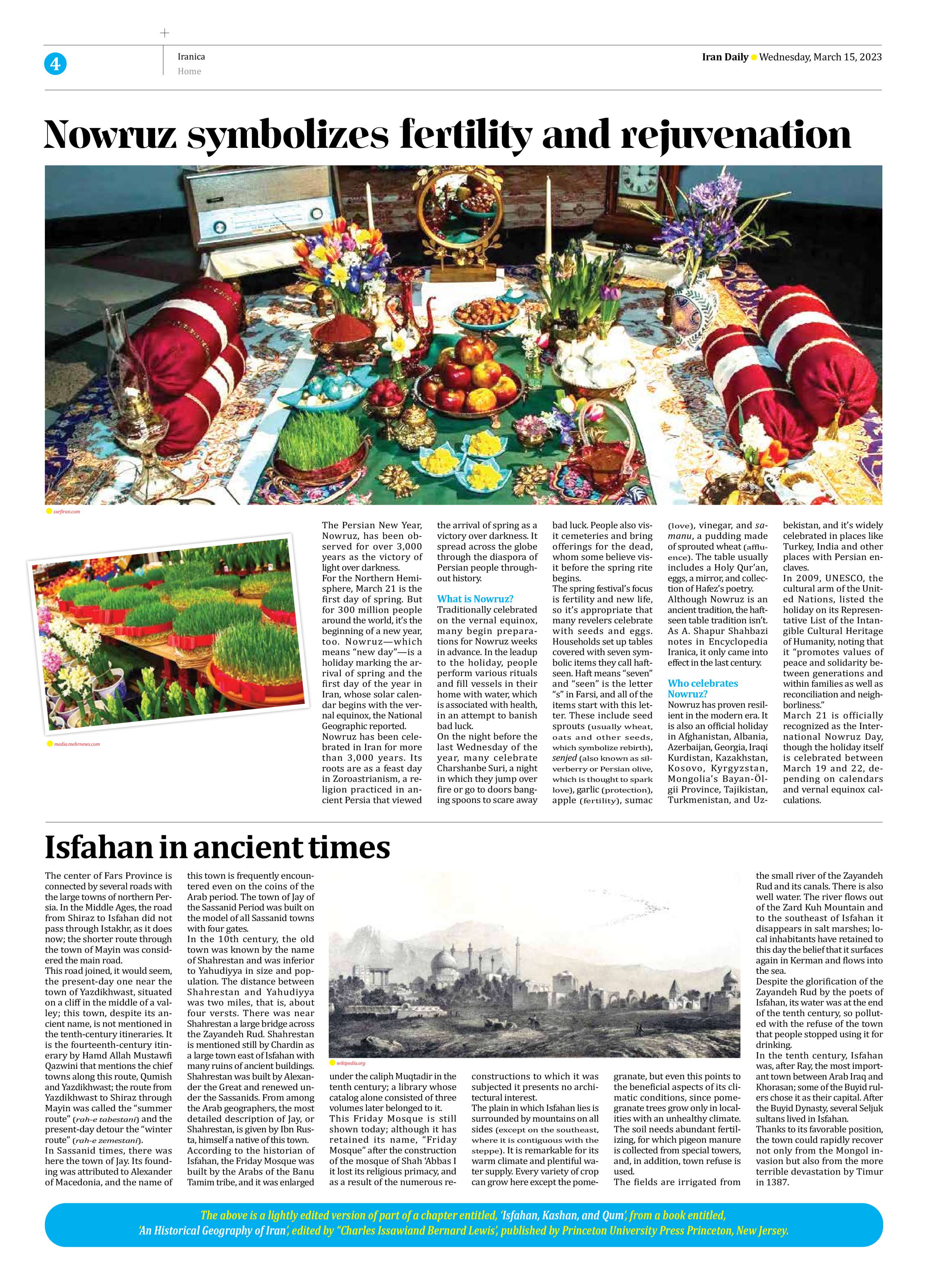
Isfahan in ancient times
The center of Fars Province is connected by several roads with the large towns of northern Persia. In the Middle Ages, the road from Shiraz to Isfahan did not pass through Istakhr, as it does now; the shorter route through the town of Mayin was considered the main road.
This road joined, it would seem, the present-day one near the town of Yazdikhwast, situated on a cliff in the middle of a valley; this town, despite its ancient name, is not mentioned in the tenth-century itineraries. It is the fourteenth-century itinerary by Hamd Allah Mustawfi Qazwini that mentions the chief towns along this route, Qumish and Yazdikhwast; the route from Yazdikhwast to Shiraz through Mayin was called the “summer route” (rah-e tabestani) and the present-day detour the “winter route” (rah-e zemestani).
In Sassanid times, there was here the town of Jay. Its founding was attributed to Alexander of Macedonia, and the name of this town is frequently encountered even on the coins of the Arab period. The town of Jay of the Sassanid Period was built on the model of all Sassanid towns with four gates.
In the 10th century, the old town was known by the name of Shahrestan and was inferior to Yahudiyya in size and population. The distance between Shahrestan and Yahudiyya was two miles, that is, about four versts. There was near Shahrestan a large bridge across the Zayandeh Rud. Shahrestan is mentioned still by Chardin as a large town east of Isfahan with many ruins of ancient buildings. Shahrestan was built by Alexander the Great and renewed under the Sassanids. From among the Arab geographers, the most detailed description of Jay, or Shahrestan, is given by Ibn Rusta, himself a native of this town.
According to the historian of Isfahan, the Friday Mosque was built by the Arabs of the Banu Tamim tribe, and it was enlarged under the caliph Muqtadir in the tenth century; a library whose catalog alone consisted of three volumes later belonged to it.
This Friday Mosque is still shown today; although it has retained its name, “Friday Mosque” after the construction of the mosque of Shah ‘Abbas I it lost its religious primacy, and as a result of the numerous reconstructions to which it was subjected it presents no architectural interest.
The plain in which Isfahan lies is surrounded by mountains on all sides (except on the southeast, where it is contiguous with the steppe). It is remarkable for its warm climate and plentiful water supply. Every variety of crop can grow here except the pomegranate, but even this points to the beneficial aspects of its climatic conditions, since pomegranate trees grow only in localities with an unhealthy climate. The soil needs abundant fertilizing, for which pigeon manure is collected from special towers, and, in addition, town refuse is used.
The fields are irrigated from the small river of the Zayandeh Rud and its canals. There is also well water. The river flows out of the Zard Kuh Mountain and to the southeast of Isfahan it disappears in salt marshes; local inhabitants have retained to this day the belief that it surfaces again in Kerman and flows into the sea.
Despite the glorification of the Zayandeh Rud by the poets of Isfahan, its water was at the end of the tenth century, so polluted with the refuse of the town that people stopped using it for drinking.
In the tenth century, Isfahan was, after Ray, the most important town between Arab Iraq and Khorasan; some of the Buyid rulers chose it as their capital. After the Buyid Dynasty, several Seljuk sultans lived in Isfahan.
Thanks to its favorable position, the town could rapidly recover not only from the Mongol invasion but also from the more terrible devastation by Timur in 1387.
The above is a lightly edited version of part of a chapter entitled, ‘Isfahan, Kashan, and Qum’, from a book entitled,
‘An Historical Geography of Iran’, edited by “Charles Issawiand Bernard Lewis’, published by Princeton University Press Princeton, New Jersey.







